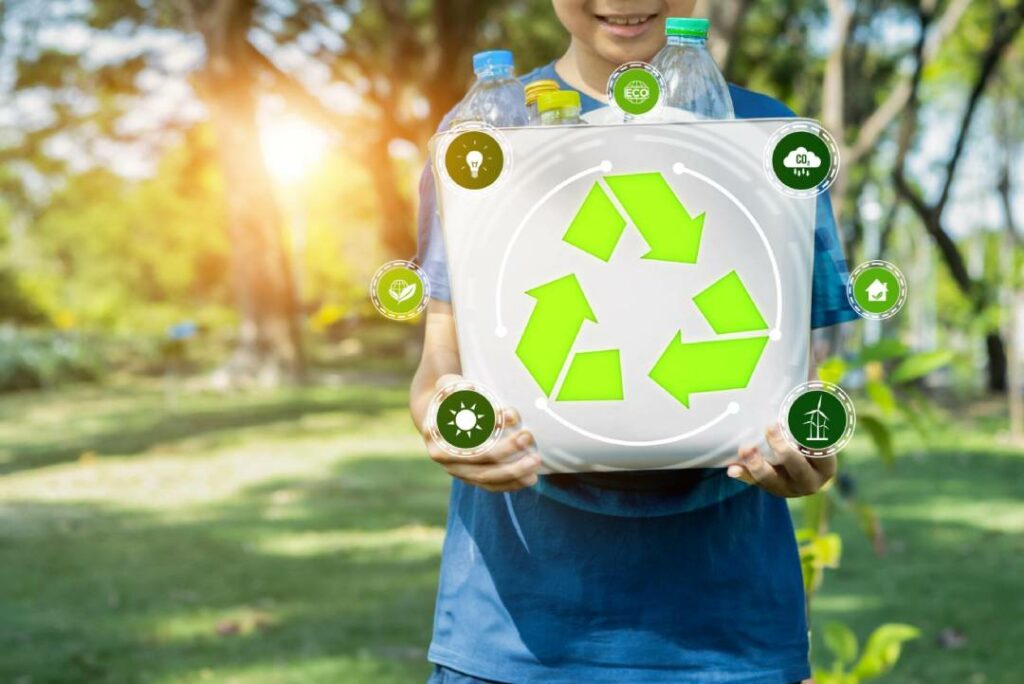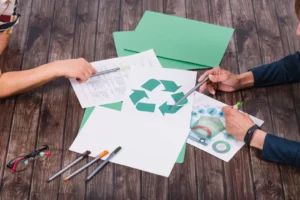To attain the aim of a sustainable future, both individuals and businesses are increasingly searching for innovative ways to reduce waste and minimize their influence on the environment. One initiative that is becoming more and more popular is the idea of full-circle recycling programs. We’ll talk about the nature of these programs, their benefits, and whether or not they can help achieve the elusive goal of living a waste-free life in the upcoming blog post.
Understanding Full Circle Recycle Programs
Traditional recycling practices are not the only ones that Full Circle Recycle Programs go beyond. Full Circle Recycle Programs are designed to finish the loop by reintroducing recycled materials back into the production cycle. Conventional recycling entails the collecting and processing of recyclable materials. Full Circle Recycle Programs strive to close the environmental loop. Through the implementation of this all-encompassing strategy, the goal is to establish a system that is both continuous and sustainable, in which resources are recycled, reused, and repurposed cyclically.
The Three R’s: Reducing, Reusing, and Recycling
Reduce, reuse, and recycle are the three fundamental ideas that must be emphasized before getting into the intricacies of Full Circle Recycle Programs. It is essential to highlight the significance of these three principles. A lifestyle that is more sustainable and ecologically sensitive may be built on these ideas, which serve as the basis.
To begin the process of establishing a lifestyle that generates zero waste, the first step is to reduce consumption and trash creation as much as possible. It is possible for us to drastically lessen our impact on the environment if we are attentive to our purchase patterns and choose items that have minimum packaging whenever possible.
When goods are reused, it helps to extend their lives and minimizes the need for fresh resources. Reusing items wherever feasible is advantageous. The adoption of a culture that values reuse might be as straightforward as the utilization of reusable containers, water bottles, and shopping bags.
Recycle: Recycling in its traditional form is crucial for preventing items from being dumped in landfills and providing them with a second chance at life. Nevertheless, Full Circle Recycle Programs go one step further by actively putting recovered materials back into the production process. This represents a significant improvement.
The Benefits of Full Circle Recycle Programs
Full Circle Recycle Programs help to conserve important resources by lowering the amount of resources that are wasted by reducing the demand for raw materials. As a consequence, biodiversity and natural ecosystems are preserved.
Savings on Energy: In general, the manufacture of things made from recycled materials takes less energy than the creation of goods made from virgin resources. It is possible to see a large reduction in energy consumption through the utilization of recycled materials in the manufacturing cycle.
Garbage Reduction: The potential of Full Circle Recycle Programs to reduce the amount of garbage that is produced is perhaps the most important advantage that these programs provide. The establishment of a closed-loop system that brings about a significant reduction in the amount of waste that is transported to landfills is the objective of these initiatives. This will be accomplished by keeping materials in circulation.
Impact on the Environment: Reducing the demand for new production helps lessen the environmental impact that is connected with the extraction of resources, transportation, and manufacturing. Full Circle Recycle Programs are an essential component in the process of breaking the linear model of “take, make, dispose” that has been the standard for an excessively long period.
Challenges and Considerations
Many obstacles and issues need to be considered, even though Full Circle Recycle Programs contain a great deal of promise:
- Complexity in Logistical Operations: The implementation of a closed-loop system requires sophisticated logistics, coordination with a wide variety of stakeholders, and the construction of effective collecting and processing procedures.
- For Full Circle Recycle Programs to be successful, it is necessary to have the participation of consumers. The dissemination of information on the significance of recycling and the advantages of closed-loop systems is necessary to achieve widespread adoption.
- It is vital to conduct quality control and make certain that the recycled materials are of a high grade to effectively reintroduce recycled materials into the production process once they have been removed from inventory. It may be necessary to implement more strict quality control procedures to guarantee that the product criteria are satisfied.
Are Full Circle Recycle Programs the Key to Zero Waste Living?
When it comes to reducing trash, Full Circle Recycle Programs are a promising strategy; nevertheless, they are not a solution that can be implemented on their own. A comprehensive commitment to the concepts of reducing, reusing, and recycling is required to achieve the goal of living a waste-free lifestyle. By addressing the underlying reasons for trash creation and developing a closed-loop system that is both sustainable and environmentally friendly, Full Circle Recycle Programs have the potential to play a crucial part in this journey.
Conclusion
The conclusion is that Full Circle Recycle Programs are emerging as a beacon of hope for a more sustainable future as individuals and organizations attempt to make ecologically responsible decisions. Through our participation in these projects, we are bringing ourselves one step closer to the realization of the objective of living a life with zero waste and leaving a constructive legacy for future generations.







